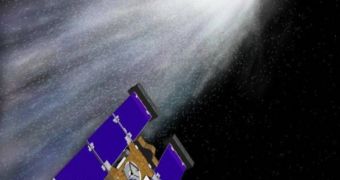Over the past years, a significant portion of the international astronomical community has come to the conclusion that life on our planet must have originally come from comets. Of course, it is not talking about bacteria or other types of microorganisms, but about the chemicals that were needed for the initial reactions that first led to the formation of amino-acids to take place. Now, this theory is further added on, as the amino-acid glycine, which is an essential component of all living things, has been discovered to exist on the comet Wild 2.
Previously discovered comets that fell on the Earth billions of years ago have already revealed traces of interesting chemicals, and some theories say that even the platinum that can now be found on the planet came from space, Wired informs.
“If you’re seeing amino acids in comets, then that really gives credence to the idea that the basic components of life are going to be widespread throughout the universe. It’s one thing for me to do it in the lab and say it should be so, but it’s another thing for somebody to actually measure it,” NASA Astrobiology Institute planetary biologist Max Bernstein, who has not been part of the new investigation, explains.
The sample of material from Wild 2 that has been recently analyzed came from a 2004 mission carried out by the NASA spacecraft Stardust. The probe made a fly-by through the thick layer of gas and dust that surrounded the comet's nucleus, and exposed a container filled with aerogel to this environment. The aerogel is a highly permissive material, which is, as the name states, made up of 90+ percent air. Once inside, the gas and dust particles got trapped and were returned to Earth for sampling, via a 2006 parachute-drop mission from orbit.
“What we did was look at the carbon isotopes. The stuff on the Earth has a special signature, and the extraterrestrial signature is very different. When we looked at glycine and measured its carbon signature, we saw that it’s in the extraterrestrial range,” NASA scientist Jamie Elsila says. The expert presented the amazing find at the latest annual meeting of the American Chemical Society (ACS), held in Washington DC.
“We don’t know how life originated on the early Earth. But we have a pretty good idea that the comets and meteorites that bombarded the early Earth provided a lot of the material,” Elsila concludes.

 14 DAY TRIAL //
14 DAY TRIAL //